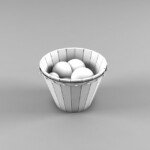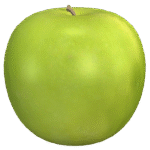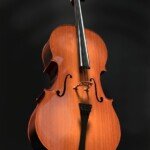Harbor Freight CNC Machine: Realistic Appearance for Amateurs, When to Go Professional
Harbor Freight’s gleaming aisle is expected to make incredible deals on the tools of each project. Among them, you will find compact CNC routers – like popular machines "omaker" or "warrior" 3018 style countertop model. With attractive price tags, they sparked the imaginations of Diyers, Crafters and Small Shop owners. But these affordable machines can really handle "CNC processing," Especially for harsh materials and precision parts? Let’s dive.
What is a port freight CNC machine (not)
Mainly provided by port freight Entry-level, desktop CNC router. Think of them as competent engravers or light cutters, not industrial plants. Key features include:
- Machine Type: The vast majority of 3-axis systems (X, Y, Z motion). Think about engraving, symbol making, complex patterns.
- Typical Model: Omaker 3018-SE or similar variants are representative. These exercise regularly:
- Small working area (approximately 11.8" x 7.1" x 1.8" / 300mm x 180mm x 45mm).
- Low power spindle (usually below 200W).
- Lightweight frame, usually made of aluminum extruded and plastic components.
- Mainly designed for softer materials: wood (Balsa, pine, plywood), plastic (acrylic, PVC), soft PCB substrate, and occasional engraving on pre-softened aluminum (with significant limitations).
- Price point: Their main attraction. Much cheaper than industrial CNC or even medium hobby machines.
Functions and limitations: Set realistic expectations
Advantages:
- Low barrier entry: Perfect for learning CNC basics, G code basics, and CAD/CAM software without breaking the bank.
- Ideal for soft materials: Perfect for detailed engraving, woodworking projects, model building, creating acrylic logos and prototype designs in foam.
- Tinker Bell’s playground: It is very popular in modifying (upgrade spindles, controllers, add limit switches), which is a valuable learning experience.
Key limitations:
- Material constraints: Industrial metal processing? forget it. Even harder woods or dense plastics are the challenge. Cut steel or titanium is not on the table at all. Light aluminum engraving requires extremely Slow speed, shallow cutting, rigid setup and specialized tools – place these machines well beyond their comfort zone and at high risk of rupture or poor results.
- rigidity: Lightweight structures lack the structural stiffness required for substantial cutting forces. This translates to:
- Vibration and chat: Causes poor surface effect, tool breakage and reduced accuracy.
- bending: The frame and gantry can be deflected under load, resulting in inaccurate dimensions and loss of accuracy.
- strength: The low combat spindle stalls easily under moderate pressure. Apart from the softest materials, they lack the torque of meaningful material removal rates.
- Accuracy and accuracy: Although impressive details For their lessonsthe expected tolerance is far below the professional processing standards (e.g., ±0.005" or tighter). Heat drift, rebound in drives and fast frame elastic compounds. Repeatable high-precision work is difficult.
- Durability and duty cycle: Designed for intermittent hobby use rather than continuous production. Heavy duty of components (bearings, spindles, electronics) is not rated as long-term work.
- Software and Control: Basic software is usually included, requiring users to invest in more powerful CAM solutions. Controller electronics may lack advanced functionality and robustness.
Simple words: If your project involves hardwood, sheet metal parts, or requires precise dimensions for functional components, a port freight CNC router can cause frustration and limitations. They are superb learning tools and specific niche making tasks in soft materials, but they are no Miniature version of industrial VMC.
Know when to upgrade to professional CNC machining
When you need it, your project has exceeded the countertop:
- Metal parts: Consistent and reliable processing of aluminum, steel, brass, titanium, etc.
- Complex geometric shapes: Parts that require undercut, composite angles or complex 3D profiles. (This requires more axes!).
- Tensional tolerances: Accuracy requirements are better than +/- 0.010" consistent.
- Surface finish: Requirements outside of large processing.
- volume: More than 1-2 prototypes; production operation requires speed and reliability.
- Material Diversity: Use challenging or high-performance alloys.
Enter professional 5-axis CNC machining: Why the key point is the solution
When your thoughts ask True manufacturing capabilitythis is a professional provider such as Greatlight Shine. We operate completely differently:
- Advanced 5-axis machining: Our core strength. Five axes (X, Y, Z, plus two rotation axes) achieve unparalleled flexibility. We can machining incredibly complex parts in a single setup, reducing errors, ensuring accuracy and allowing geometry on 3-axis routers.
- Industrial grade machinery: We use a polymer machining center with a powerful spindle, accurate linear guide, robust tool changer and advanced controller design designed for demanding cutting operations.
- Engineering expertise: Our team not only runs machines; we solve complex manufacturing problems. We provide designs for manufacturability (DFM) analysis, material selection guidance, and process optimization.
- Material mastery: We are confident in handling a variety of engineering grade metals (aluminum, steel, stainless steel, titanium, brass, copper alloys) and plastics.
- Ensure accuracy: We always maintain tolerances (±0.0005)" or better, as needed) for functional high-performance components.
- One-stop production: From raw materials to finished products – Provide a comprehensive service including precision machining, finishing, anodizing, gilding, painting, polishing), inspection and assembly.
- Speed and scalability: Rapid prototyping and flexible production runs – Whether you need a unit or thousands, you can quickly get high-quality parts.
- Customize and solve problems: We are specialized in turning unique requirements into manufacturable solutions. Challenge us with your hardest parts!
Conclusion: Choose the right tool (or service) for the job
Harbor Freight’s CNC routers achieve valuable purpose: They democratize CNC technology access for enthusiasts and educators. For engraving tasks, light wood/plastic projects, and learning the basics, they provide fun and real utilities at very low cost. Celebrate what they are.
But mistakenly consider them to be true "The mechanical car in the box" Solutions are a common pitfall. When your project needs True accuracy exist Real materialsor involves Complex geometry and strict standardsthe limitations of these machines become obvious.
That is the space where Greatlight runs. We bridge the gap between the limitations of even high-end hobby machines and the needs of professional engineering. We combine state-of-the-art 5-axis technology with deep expertise in metal disassembly and manufacturing to deliver reliable, consistent custom-precision parts. Don’t compromise the integrity of your design or waste time fighting underdeveloped tools. When precision, complexity or material requirements are upgraded, working with a professional manufacturer at Greatlime is not only an option – it is a path to success.
Upgrade your features. Improve your design. Make Greatlight’s five-axis CNC machining power your manufacturing vision: With top technology, experts solve problems and one-stop production, the prices are competitive.
Get started with your custom precision parts now!
FAQ: Port freight CNC machines and professional processing
Q1: What can I actually do with a port freight CNC router?
A1: **Mainly: elaborately carved logos on wood, plastic or soft metal (such as aluminum plates with light engraving), decorative wood carving, PCB prototypes, simple fixtures/fixes for wood or plastics, and art projects using soft materials. Think more "Art and Crafts" Compare "Precision engineering."
Q2: Can port freight CNC routers cut aluminum?
A2: Technically, yes, but Extreme Limitation. you must Use very shallow cutting depths (maybe less than 0.5mm/pass), slow feed rate, rigid setup/fixation, specialized lubricants or coolants, and ideal single grease carbide end mill. Expect slow progress, potential tool breakage, poor surface effect, trembling and inaccurate results. It is unreliable or efficient to manufacture functional metal parts. It is not the same as aluminum on a suitable mill.
Q3: What are the biggest disadvantages of these low-cost CNC routers?
A3: The key limitations are: Lack of stiffness can lead to vibration/bending, low spindle power limits material selection and cutting speed, small number of working areas limit part size, limited accuracy and difficulty in maintaining tight tolerances (±0.005" is a stretch) and is not a component designed for heavy duty or continuous use.
Question 4: When should I consider using professional CNC services such as Greatlight instead of my hobby machine?
A4: ** Consider professional services when needed:
- Parts made of harder metals (steel, stainless steel, titanium, complex alloys).
- Tight tolerances (always better than ±0.005" / 0.127mm).
- Complex 3D shapes, deep cavity, complex features or undercuts that require multi-axis machining.
- High-quality finishes exceed light engraving or rough cutting.
- Functional parts are subject to pressure, wear or require a specific surface treatment.
- Production requires reliability and speed.
Question 5: What are the advantages of 5-axis CNC machining compared to 3-axis?
A5:** 5-axis machining adds two rotation axes (usually tilting the spindle or rotating table). This allows:
- Single setting processing: Complex parts can be done in one fixture, resulting in significant accuracy (no repositioning errors).
- Obtain complex geometric shapes: A 3-axis machine is not possible with undercut, contoured surface, composite angle and deep cavity capabilities.
- Improved tool angle: Optimized tool orientation allows for shorter, stronger tools, better cutting action, faster speed and superior finish.
- Reduce the need for fixtures: Simplifies fixation of complex parts.
Q6: Which materials can be used in Greatlight Machine?
A6: We focus on a series of Engineering Metals Including aluminum (various alloys), steel (carbon, tool, alloy), stainless steel (304, 316, 17-4ph, etc.), titanium, brass, copper, content and many special alloys. We also machine engineering plastics (PEEK, DELRIN®, nylon, PTFE, UHMW) and composites. Tell us about your material requirements; we can handle it. **
Q7: Does Greatlight only handle large-scale production?
A7: Absolutely not! We’re good at Rapid prototyping and production.
Q8: How to start with a custom CNC part’s Greatlime?
A8: Contact us through our website! Provide your CAD drawings (steps, IGES, SLDPRT, etc.) or detailed specifications, as well as your material preferences, required tolerances, quantity and requirements for any surface surface. Our engineering team will review details, provide you with expert designs with Manufacturing (DFM) feedback if needed, and give you competitive quotes. We’re collaborating here and making your precision part come true! (Implicit call for action).

















